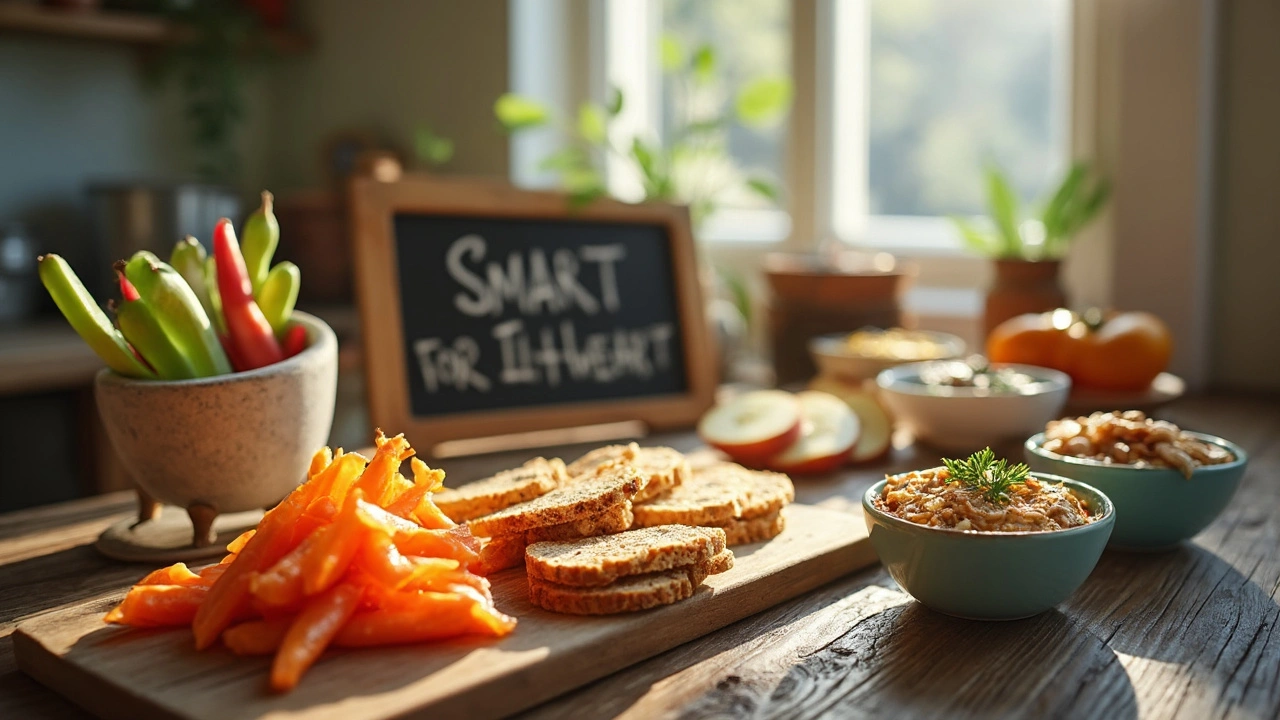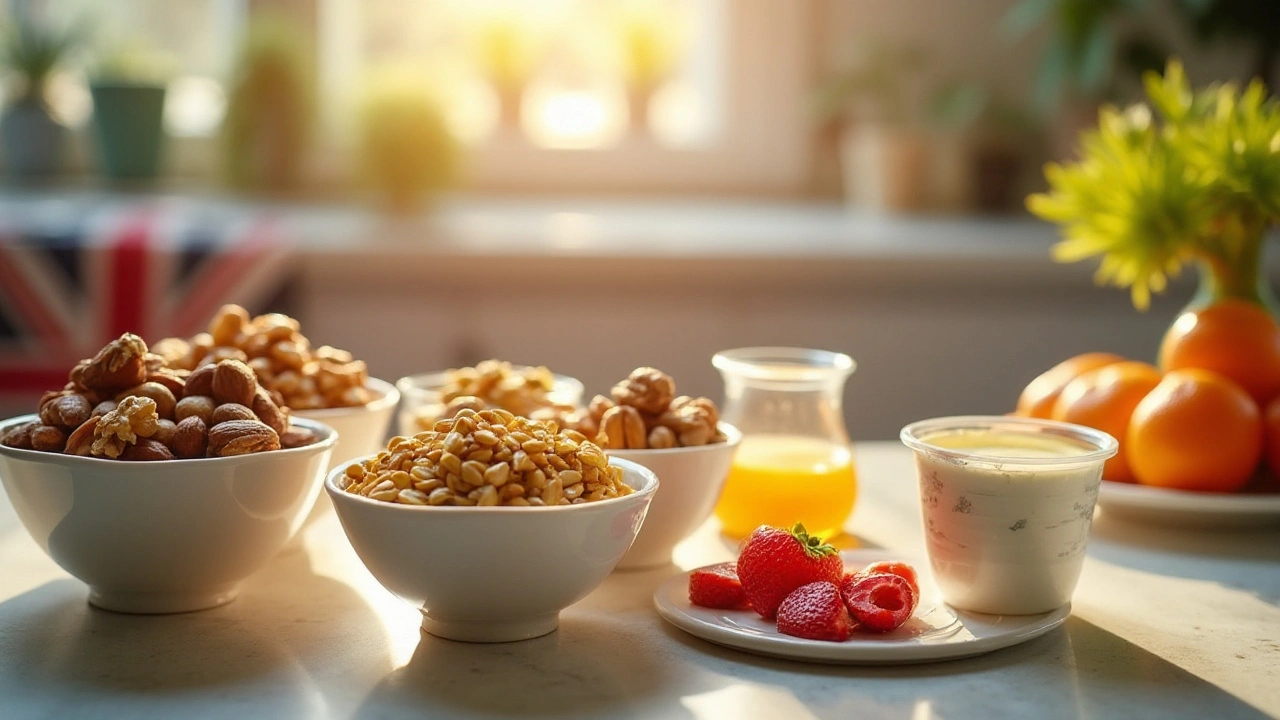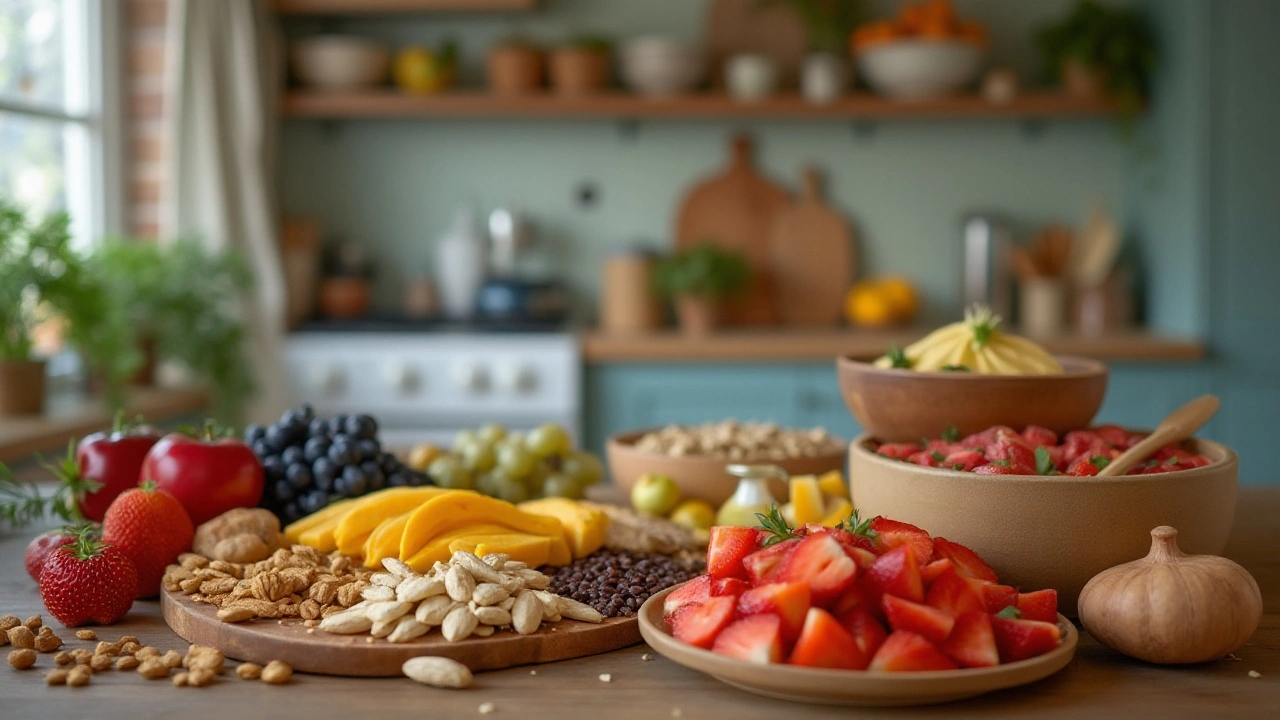Healthy Snacks for Dogs: Safe, Simple, and Homemade Treats
Want to give your dog tasty snacks without wrecking their health? You can. Swap processed chews and high-calorie biscuits for whole foods and tiny homemade treats that work for training, boredom, or just because you love them.
Start by thinking like a calorie counter. A small dog needs far fewer snack calories than you do—aim for treats that make up less than 10% of daily calories. Use bite-sized pieces and count them when you train.
Quick, safe snack ideas
Here are simple options you can pull together in minutes: carrot sticks (cut small for small mouths), apple slices without seeds, plain cooked sweet potato cubes, small pieces of cooked lean turkey or chicken, plain unsweetened yogurt (dairy-tolerant dogs only), and blueberries. All pack nutrients and most dogs love them.
Frozen snacks are great on hot days and for teething pups: blend plain yogurt with mashed banana and blueberries, spoon into ice cube trays, then freeze. You get a long-lasting, low-calorie treat that’s gentle on teeth.
Homemade treats that travel well
Make baked training treats by mashing canned pumpkin or sweet potato, mixing with oat flour until dough-like, rolling thin and cutting small shapes, then baking at low heat until firm. They last a week in the fridge and freeze well.
Another easy option: slice lean turkey jerky at home. Use thin turkey breast strips, bake low and slow until dry. No added salt, no spices. Cut into tiny pieces for training or longer strips for chewers.
Dental-friendly snacks: raw carrot chunks or a frozen carrot stick help scrape tartar and keep dogs busy. For dogs that tolerate it, a plain dental chew designed for calories can be an occasional treat—check the calorie count.
Foods to avoid: chocolate, grapes, raisins, onions, garlic, macadamia nuts, and anything containing xylitol (often in sugar-free gum and some peanut butters). Xylitol can cause rapid, life-threatening low blood sugar. Always check ingredients before sharing human food.
Introduce new snacks slowly. Offer a small amount, watch for upset stomach or allergic reaction over 24 hours. If your dog has medical conditions like pancreatitis or kidney disease, ask your vet before changing snacks.
Use snacks smartly. Reward good behavior, slow feeding, or hide a few treats in puzzle toys to stretch their value. That way you meet mental and physical needs without extra calories.
Want a quick cheat-sheet? Keep carrot sticks, apple slices, frozen yogurt cubes, and a batch of baked sweet potato treats on hand. They cover training, chewing, cooling, and dental play with minimal fuss.
Small changes in snacks add up fast. Choose whole foods, watch portions, and skip unsafe ingredients. Your dog stays healthier, you feel better about treats, and both of you get more time enjoying walks and play instead of vet visits.

How to Boost Your Health with Nutritious Snacking: Simple Rules, Portions, and Smart Ideas
Snack smarter without dieting. Learn simple rules, portions, and quick ideas to boost energy, manage weight, and support blood sugar-backed by credible nutrition advice.

Healthy Snacks Your Heart Will Love: Smart Choices for Daily Munching
Heart-healthy snacks don't have to be bland or boring. This article digs into tasty, low-effort snack ideas that help lower cholesterol and manage blood pressure. You’ll get quick tips, easy swaps, and insight into which everyday foods actually support your heart. Practical advice and real science make it easy to snack smarter. Don’t let cravings mess with your health — turn snack time into a win for your heart.

Unveiling the Power of Healthy Snacks for All-Day Energy
Healthy snacks, often overlooked, can be one of the most effective tools to maintain energy levels throughout the day. They provide essential nutrients and keep hunger at bay, which can improve focus and productivity. From nuts and seeds to yogurt and fruit, making the right snacking choices can transform one’s day. This article delves into easy and delicious snack options that help sustain energy without compromising on taste.

Delicious and Nutritious Snacks for Diabetes Management
Discover a world of satisfying and health-conscious snack options tailored for those managing diabetes. This article delves into tasty choices that not only keep blood sugar stable but also provide essential nutrition to help maintain energy levels throughout the day. Learn practical tips on snack preparation and explore why a balanced diet plays a vital role in managing diabetes effectively. By choosing wisely, snacking can be both an enjoyable and beneficial part of a diabetic-friendly lifestyle.

Nourishing Kids: Tasty and Healthy Snack Ideas
Encouraging children to eat healthily can be a rewarding journey, filled with taste tests and colorful food adventures. This article explores a variety of nutritious snack ideas that cater to the tastes and energy needs of young ones. It guides parents in making informed choices that blend health with fun, ensuring kids are excited about their snack time. Discover practical tips and intriguing facts to instill lifelong good eating habits in your children.

How Rolfing Can Improve Your Mental Health
Aug, 8 2023



